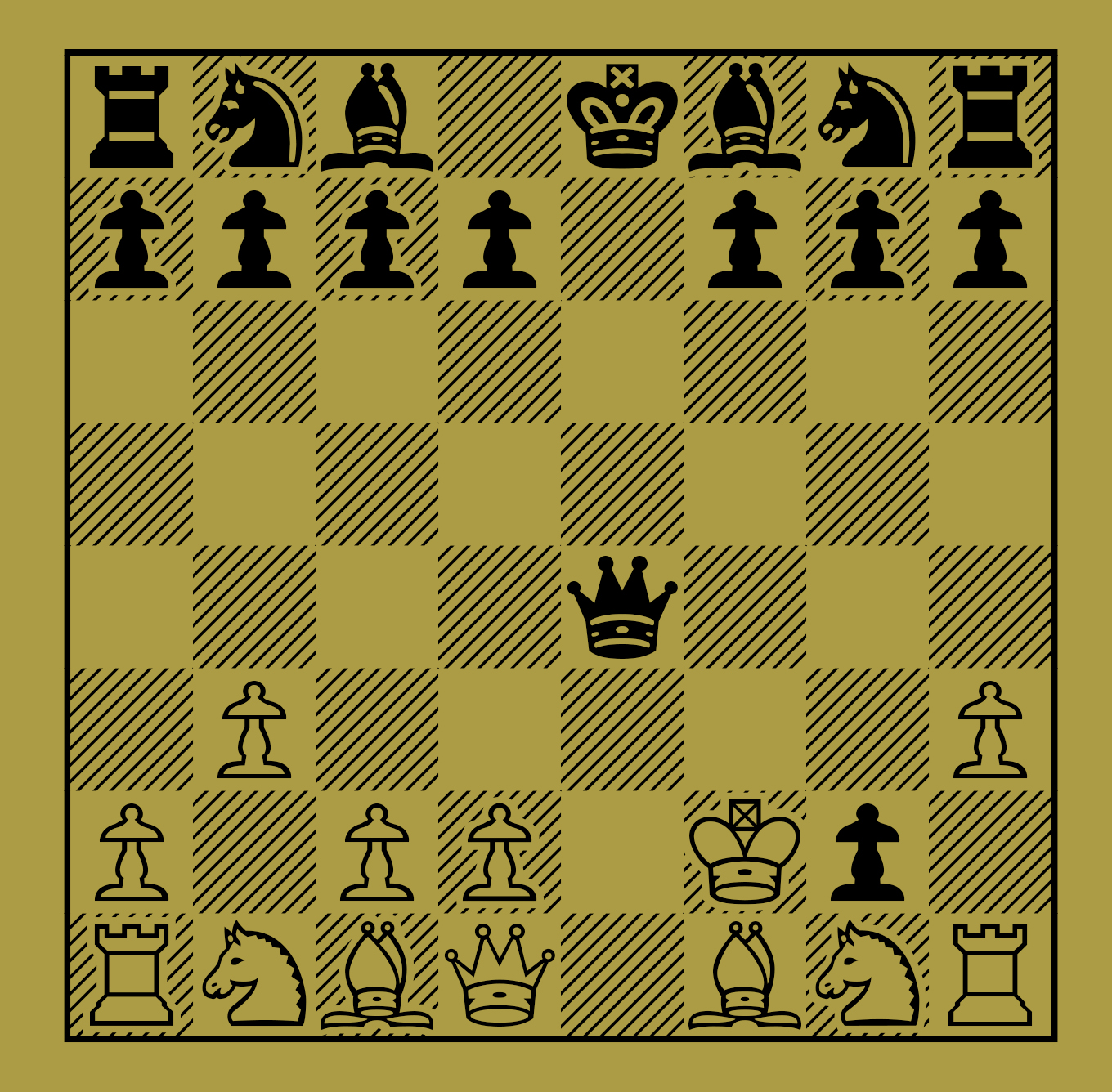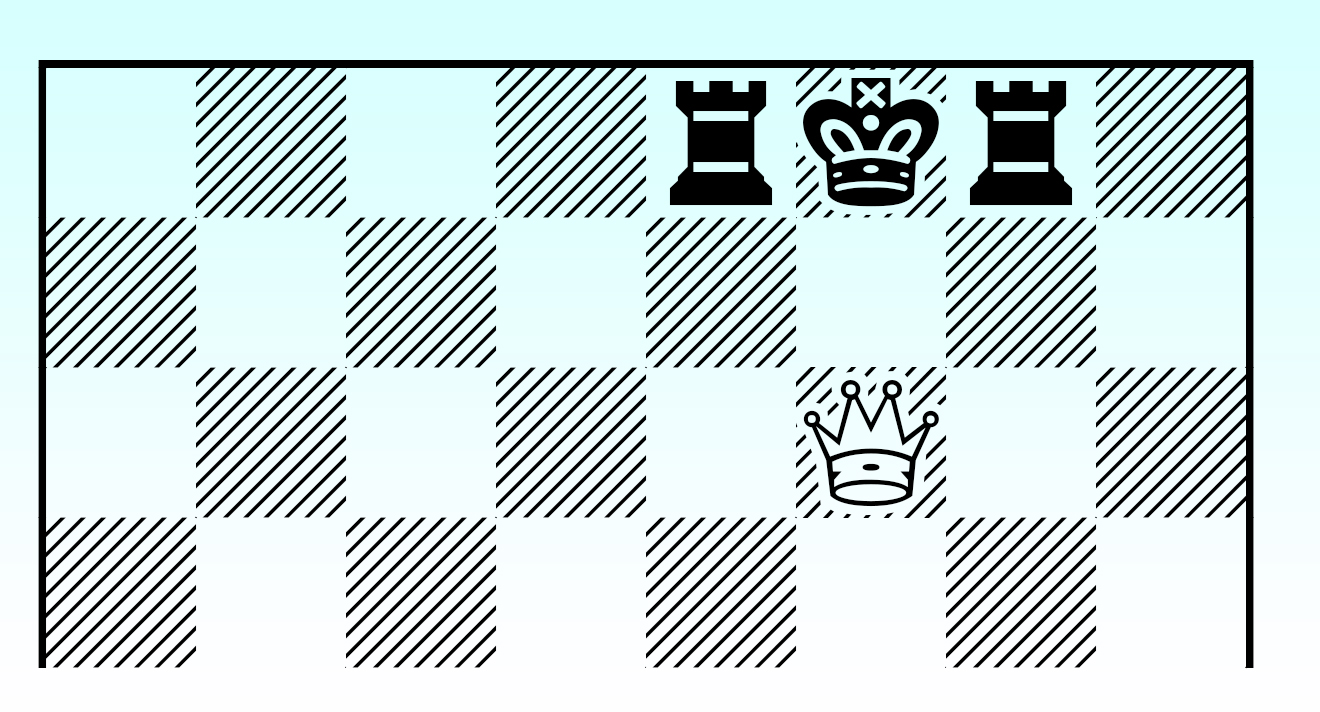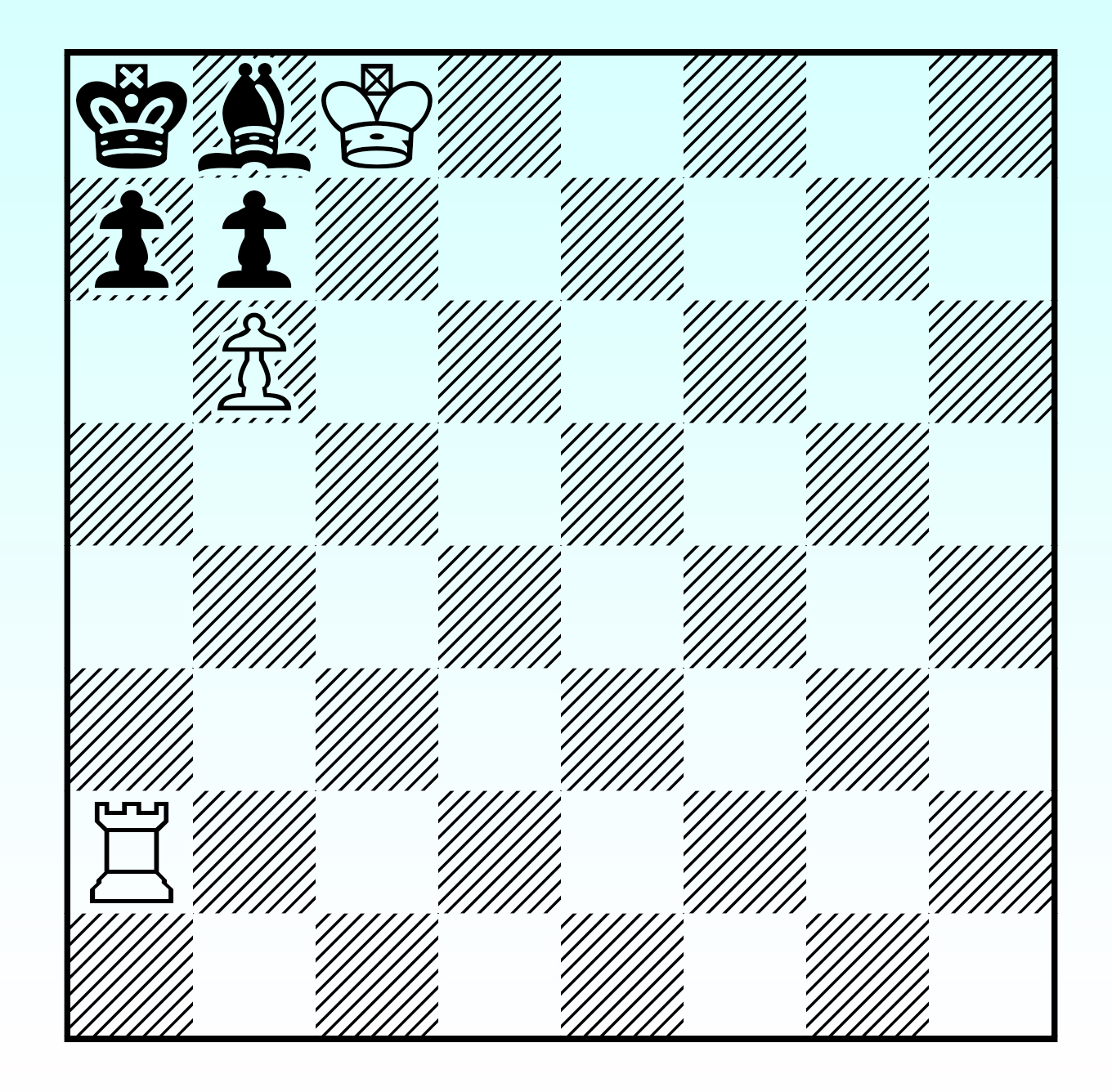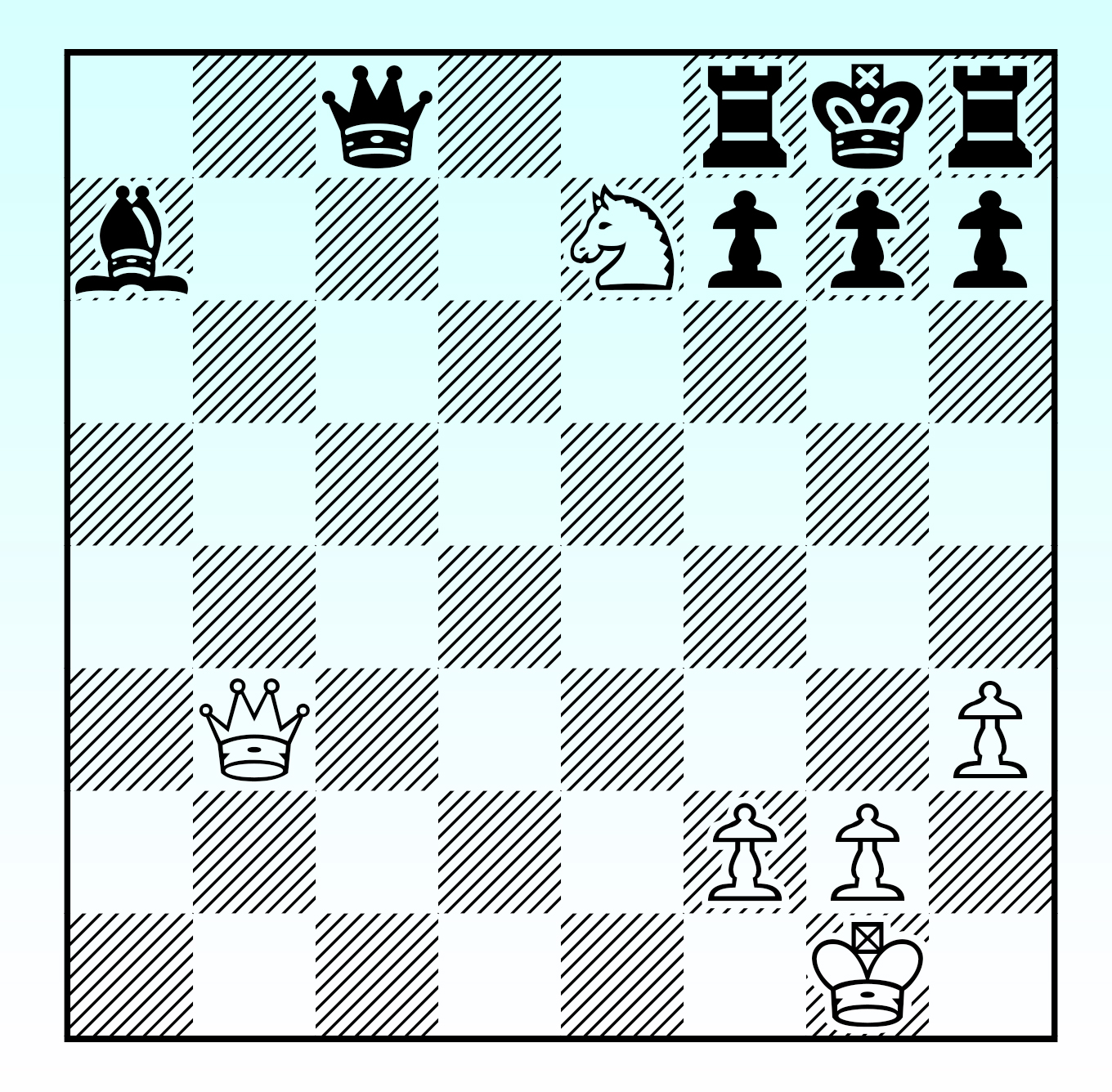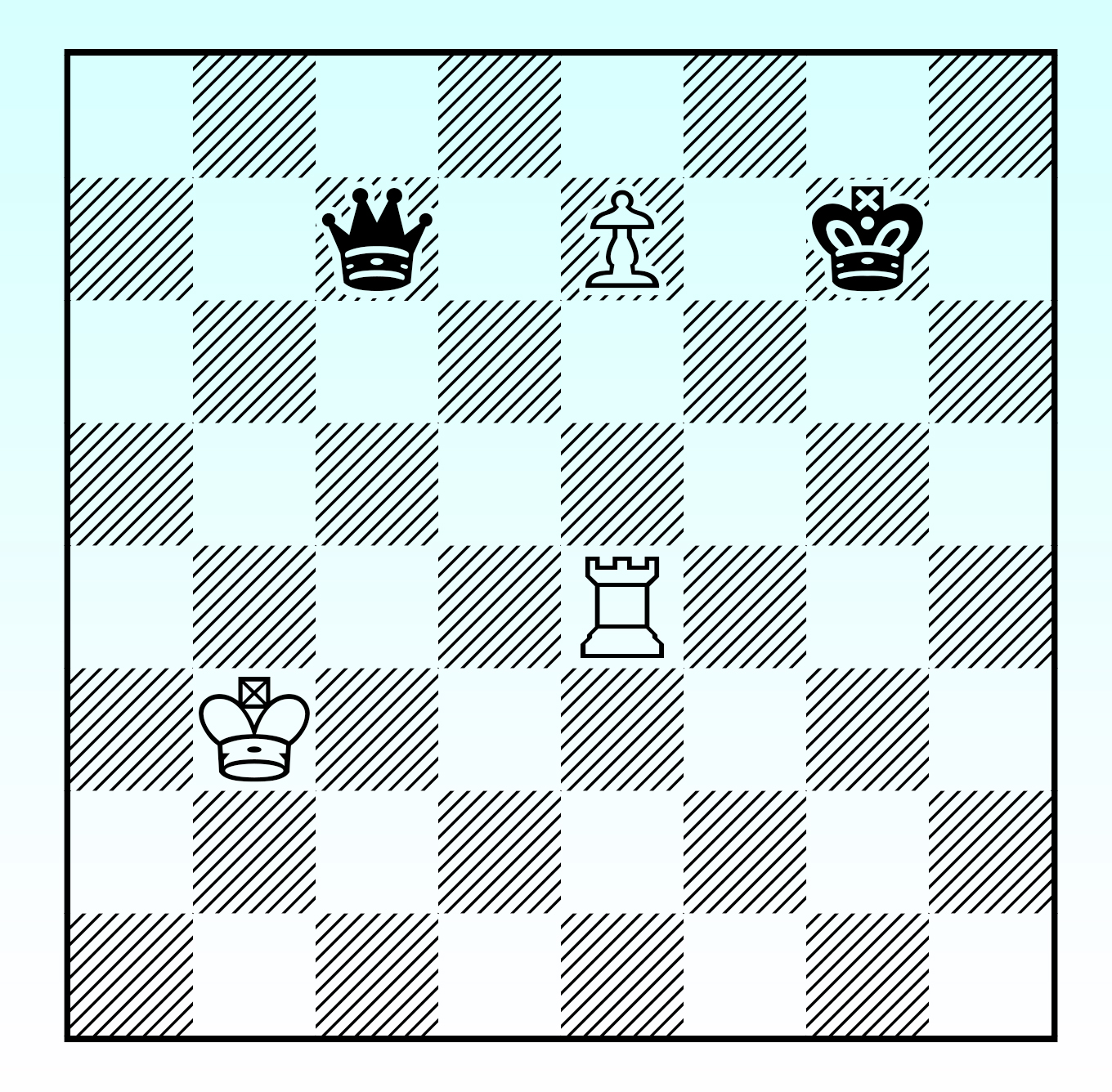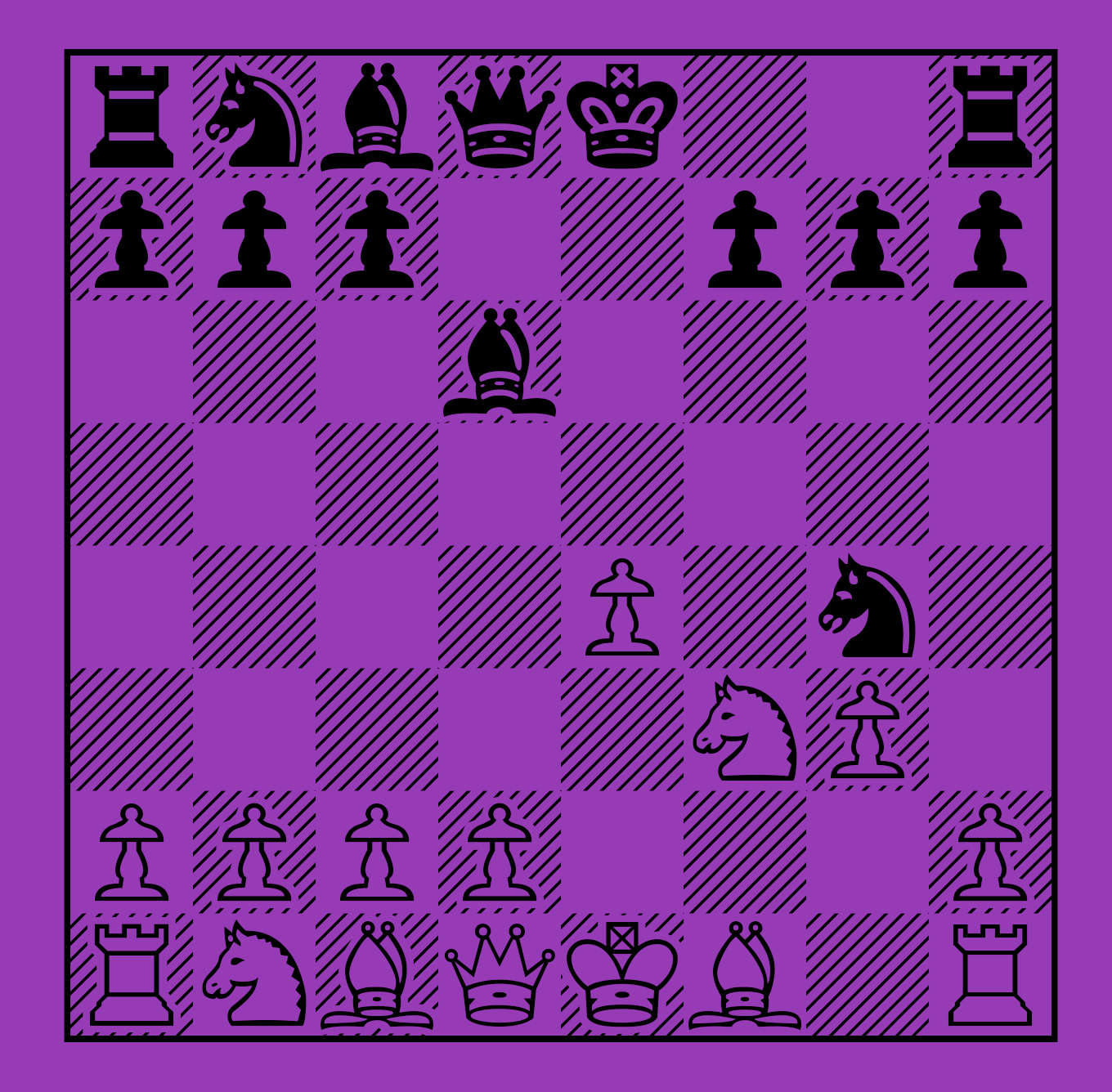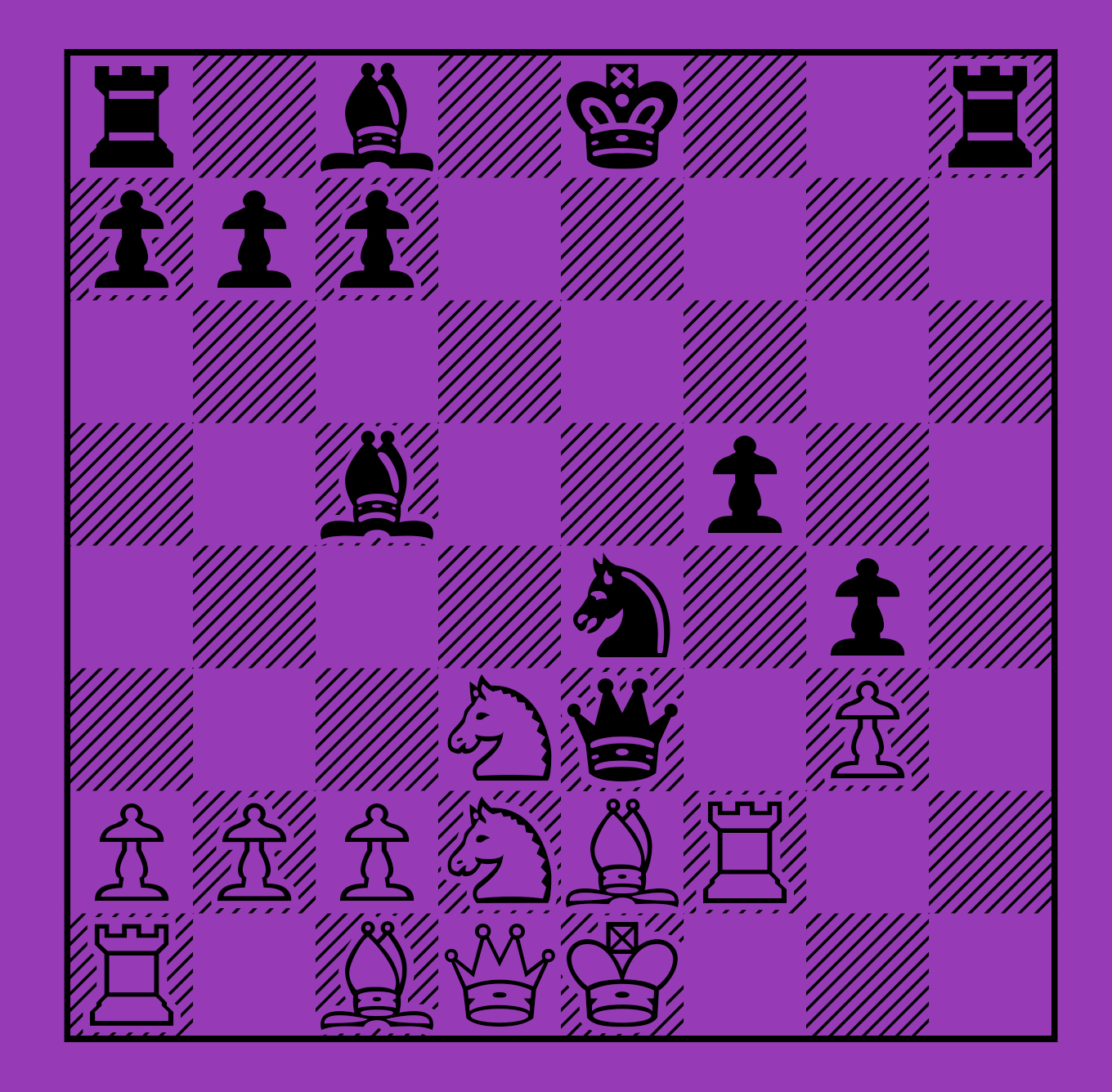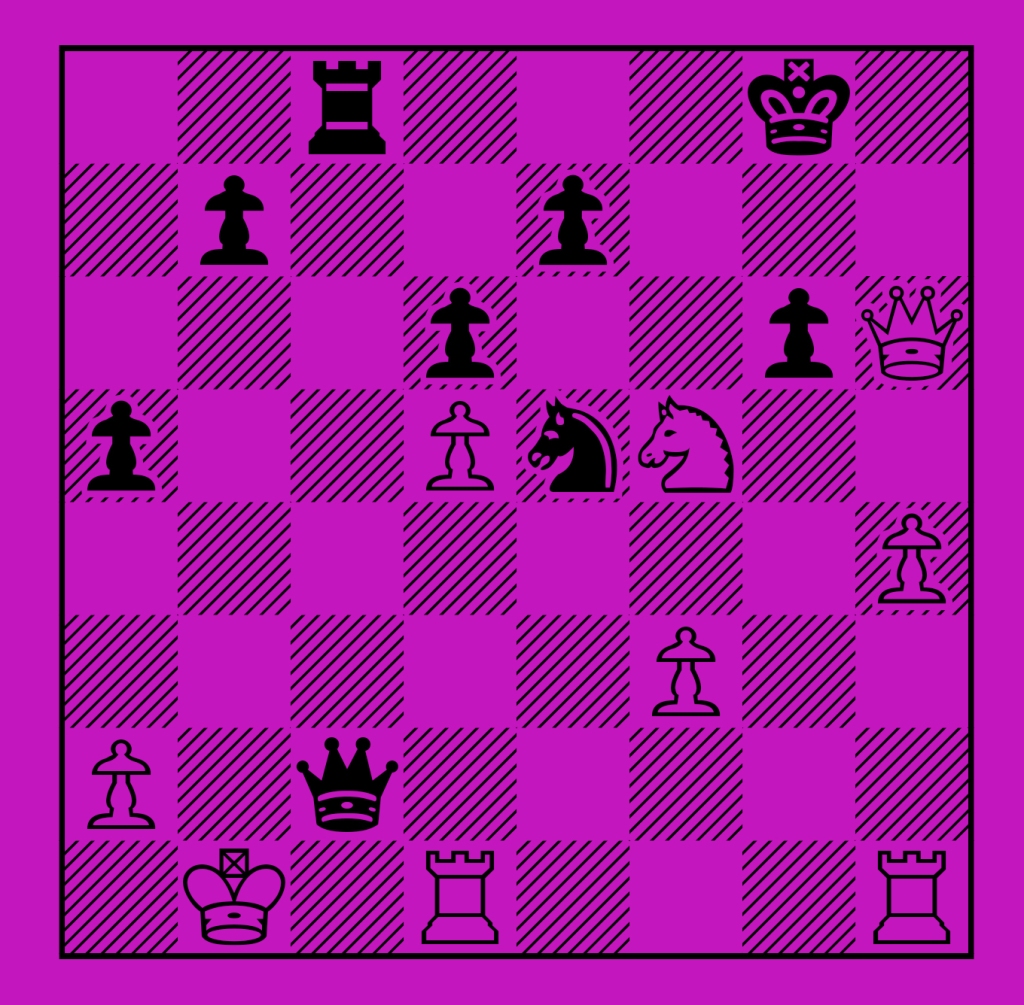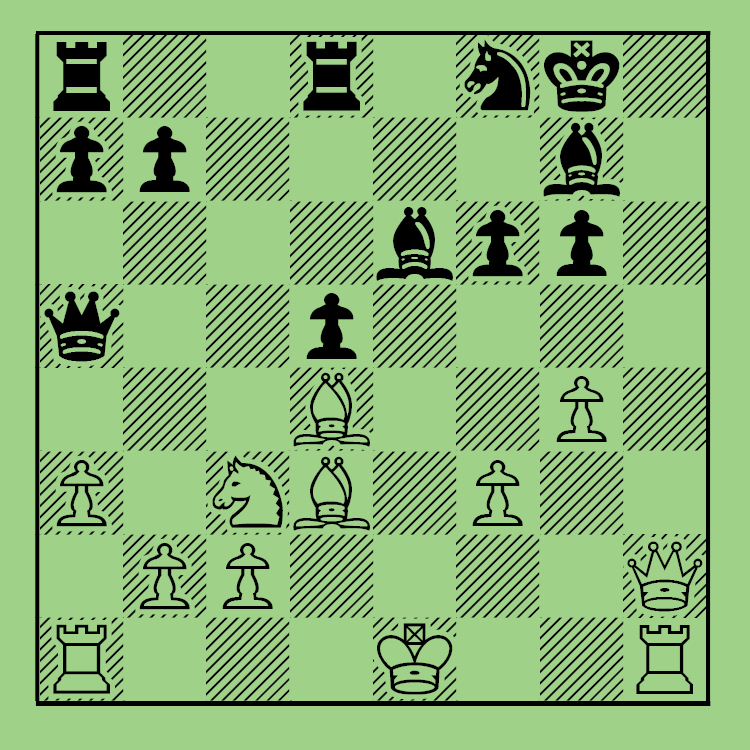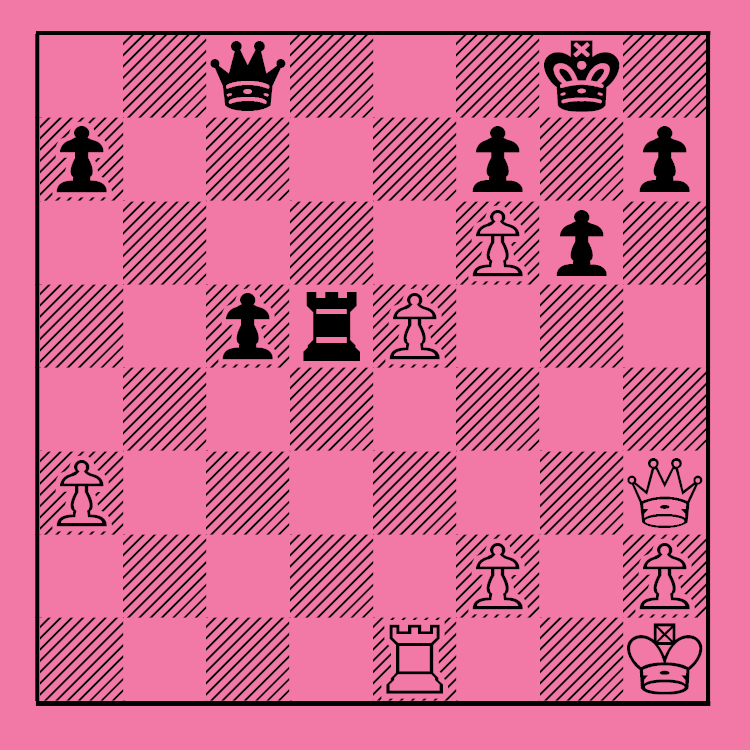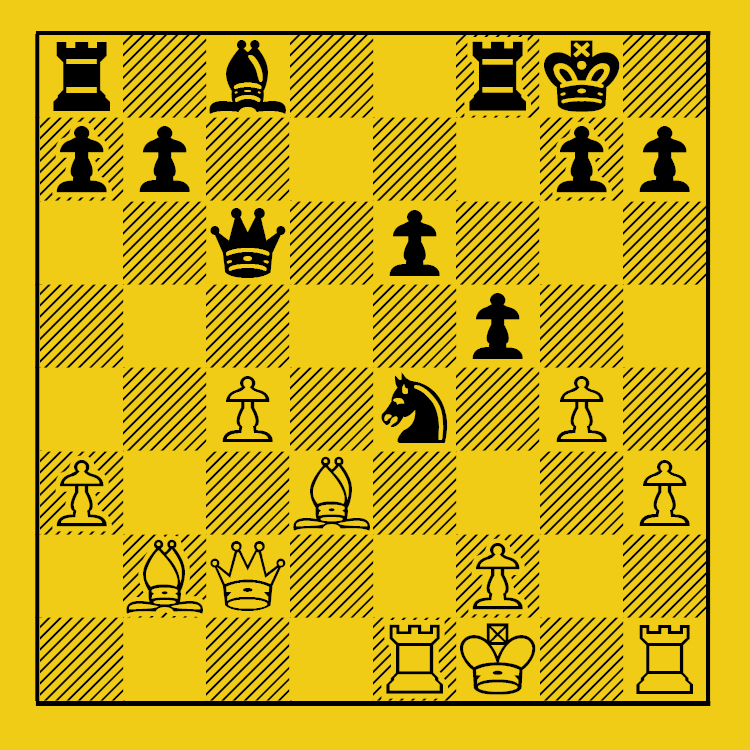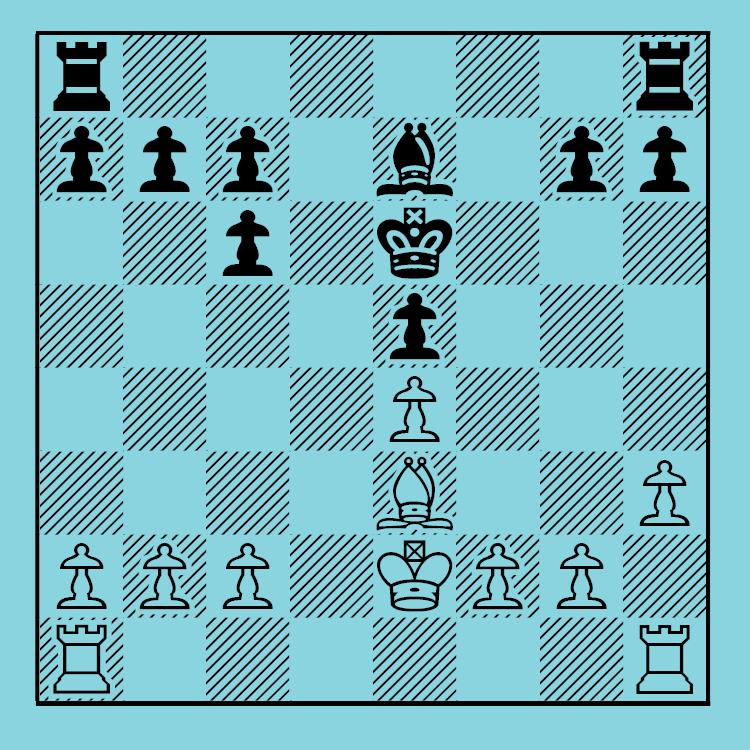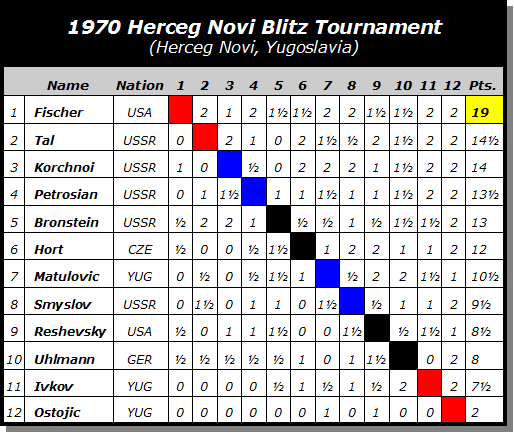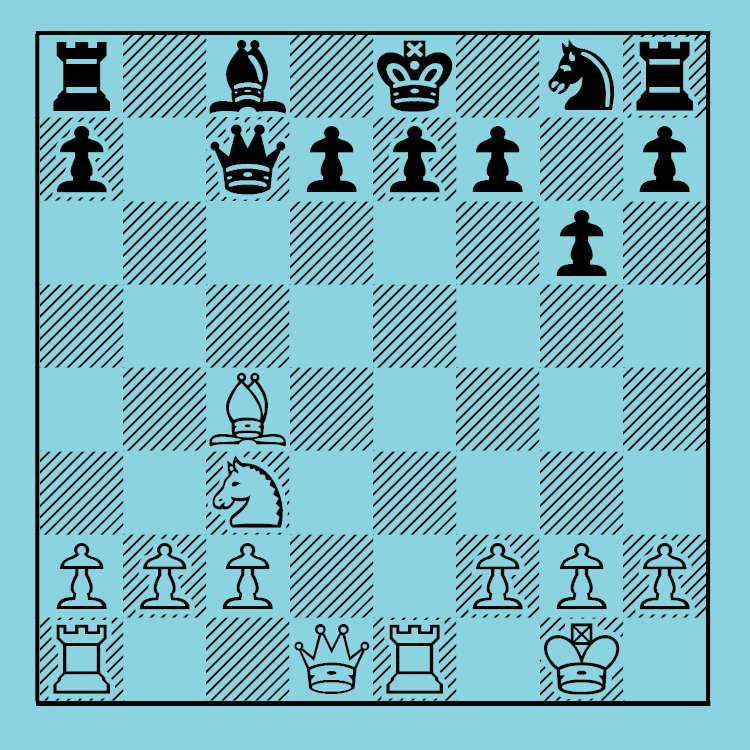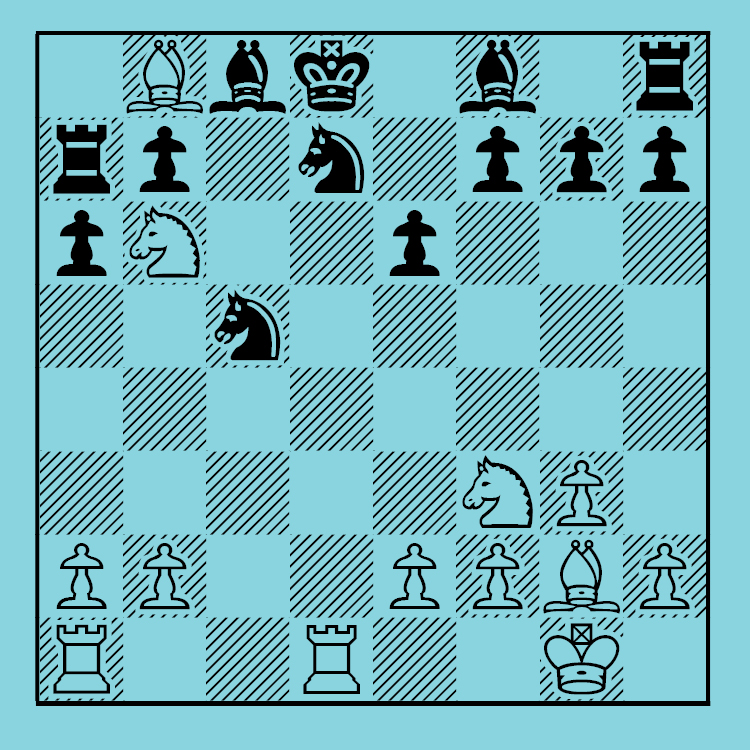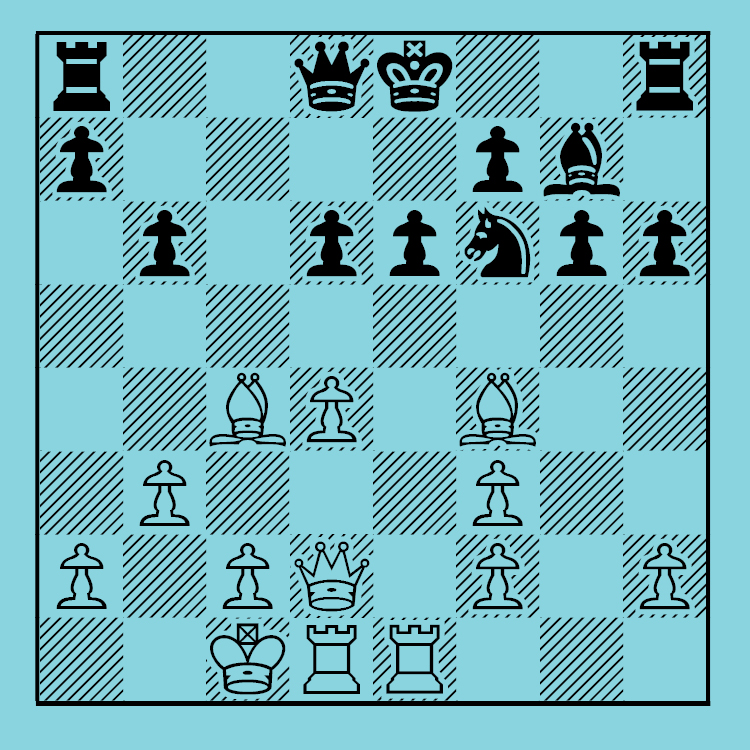Chernev called them “SEA-SERPENTS”. What are they? Simply put, they are chess games exceeding 100 moves. The name reminds one of the long list of moves each player has to record in a tournament game.
Which brings up the following question: “Just how long is the longest game in chess?”
Is it 120 moves? 150 moves? Not even close.
175 moves? Getting closer.
200 moves? Still longer.
250 moves, right?
Nope!
The longest game in history is whopping 269 moves, played over 23 ½ hours.
It seems ridiculous, but it’s true. I was amazed when I goth news – even more when I finally got the score.
I made some notes to the game and added a few diagrams just in case you get lost. I also added a PGN file (minus the diagrams of course) – for those of you who rather push buttons than pieces (or don’t have a readily available set).
Let’s go!
Ivan Nikolić-Goran Arsović
Belgrade, Feb. 17 1989
[E95]
1.d4 Nf6 2.c4 g6 3.Nc3 Bg7 4.e4 d6 5.Nf3 O-O 6.Be2 Nbd7 7.O-O e5 8.Re1 Re8 [Black can’t be too aggressive in the KID. ECO gives the following: 8…Ng4?! 9.h3 (or 9.Bg5 f6 10.Bh4 g5 11.Bg3 Nh6 12.Qd2 Nf7 13.Rad1 g4 14.Nh4 exd4 15.Nb5 +/- Bilek-G. Garcia, Havana 1965) 9…exd4 10.Nxd4 Nxf2 11.Kxf2 Qh4+ 12.Kf1 f5 13.Nf3 fxe4 14.Qd5+ +/-.] 9.Bf1 h6!? (An unusual move. Marini-Czerniak, Mar del Plata Zonal 1950, continued with 10.dxe5 dxe5 11.h3 b6 12.Be3 Bb7 13.Qc2 Kh7 14.Red1 c6 15.c5 Qe7 16.cxb6 axb6 17.Nd2 b5 18.a3 Nh5 19.Nb3 Nf4 20.Rd2 Ne6 21.Rad1 Red8 22.Na2 Rac8 23.f3 Ndf8 24.Nc5 Nd4 25.Qc3 Nfe6 26.Nxe6 Qxe6 27.b4 Rc7 28.Nc1 f5 29.Nd3 Qf6 30.f4 fxe4 31.Nxe5 g5 32.fxg5 Qxe5 33.Bxd4 Qxg5 34.Bxg7 Rxd2 35.Qxd2 Qxg7 36.Qf4 c5 37.Qf5+ Qg6 38.Rd7+ Rxd7 39.Qxd7+ Qg7 40.Qxg7+ Kxg7 41.bxc5 Bc6 42.Kf2 Kf6 43.Ke3 Ke5 44.g4 Kd5 45.Bg2 Kxc5 46.Bxe4 Be8 47.h4 Kd6 48.Kf4 Ke6 49.g5 hxg5+ 50.Kxg5 Ke7 51.Bd5 Kd6 52.Ba2 Ke7 53.Bb3 Kd6 54.Bc2 Ke7 55.Bg6 Bc6 56.h5 Kf8 57.Bd3 Kg7 58.h6+ Kf7 59.Kf5 Bd7+ 60.Ke5 Bg4 61.Bxb5 Bd1 62.Bd3 Bh5 63.Kd4 Kf6 64.Kc3 Kf7 65.Kb4 Bd1 66.Bc4+ Kg6 67.Bb3 Be2 68.a4 Kxh6 69.Bc4 Bf3 70.a5 1-0.) 10.d5 Nh7 11.Rb1 f5 12.Nd2 (And Muresan-Semenova, Women’s World Semi-Finals, 1983, continued with 12.b4 f4 13.Ba3 Bf8 14.Nd2 g5 15.Nb3 Ndf6 16.c5 Re7 17.Na5 Rg7 18.Nc4 g4 19.Rb3 Ng5 20.cxd6 cxd6 21.b5 Nf3+ 22.Kh1 Nxe1 23.Qxe1 h5 24.b6 a6 25.Na5 h4 26.Bc4 g3 27.Nd1 Qe8 28.fxg3 hxg3 29.hxg3 Qg6 30.Nf2 Qh7+ 0-1.) 12…f4 13.b4 g5 14.Nb3 Bf8 (14…Ndf6!?) 15.Be2 Ndf6 16.c5 g4 17.cxd6 cxd6 18.a3 Ng5 19.Bf1 Re7 20.Qd3 Rg7 21.Kh1 Qe8 22.Nd2 g3 23.fxg3 fxg3 24.Qxg3 Nh3 25.Qf3 Qg6 26.Nc4 Bd7 27.Bd3 Ng5 28.Bxg5 Qxg5 29.Ne3 Re8 30.Ne2 Be7 31.Rbd1 (Rbc1!?) 31…Rf8 32.Nf5 Ng4 33.Neg3 h5 34.Kg1 h4
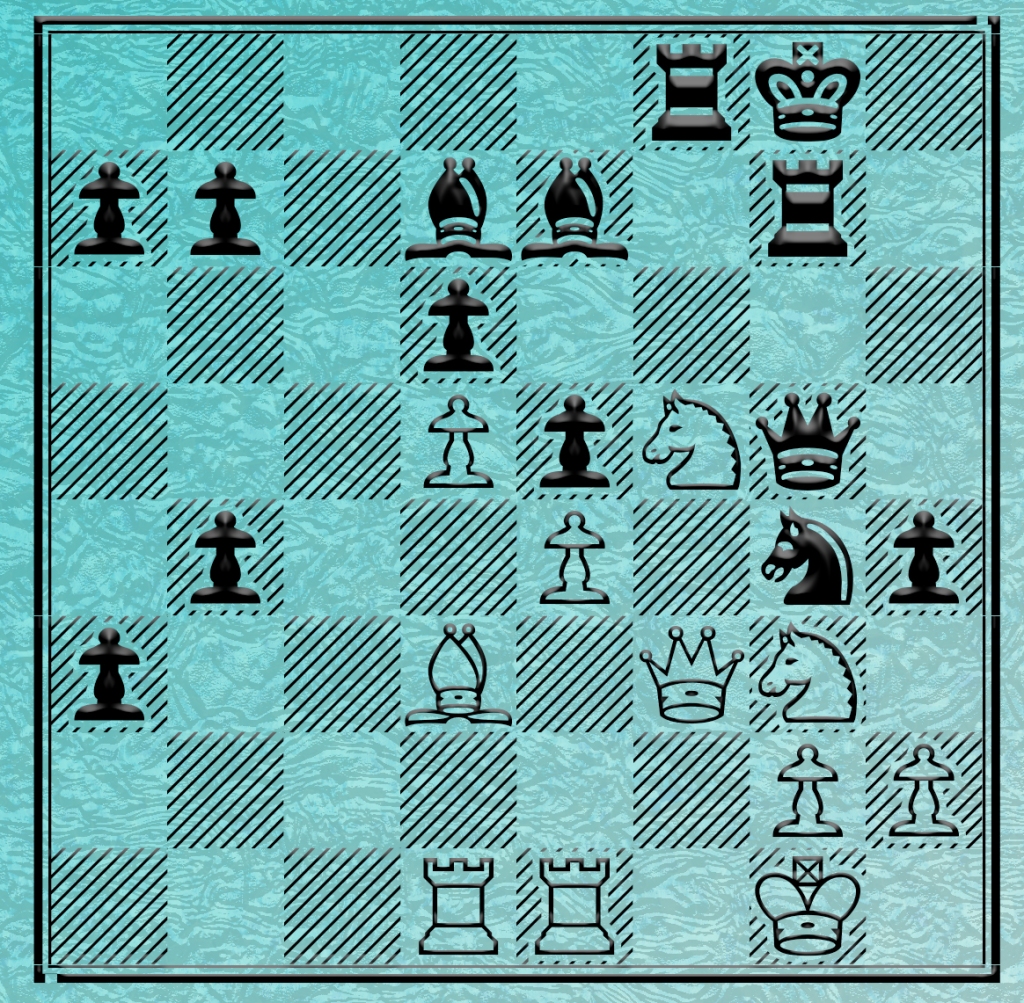
35.Qxg4! Qxg4 36.Nh6+ Kh7 37.Nxg4 hxg3 38.Ne3 gxh2+ 39.Kxh2 Rh8 40.Rh1 Kg6+ 41.Kg1 Rc8 42.Be2 Rc3 43.Rd3 Rc1+ 44.Nf1 Bd8 45.Rh8 Bb6+ 46.Kh2 Rh7+ 47.Rxh7 Kxh7 48.Nd2 Bg1+ 49.Kh1 Bd4+ 50.Nf1 (50.Kh2! and White starts making progress.) 50…Bg4 51.Bxg4 Rxf1+ 52.Kh2 Bg1+ 53.Kh3 Re1 54.Bf5+ Kh6 55.Kg4 Re3 56.Rd1 Bh2 57.Rh1 Rg3+ 58.Kh4 Rxg2 59.Kh3 Rg3+ 60.Kxh2 Rxa3 61.Rg1 Ra6 62.Rg6+ Kh5 63.Kg3 Rb6 64.Rg7 Rxb4 65.Bc8 a5 66.Bxb7 a4 67.Bc6 a3 68.Ra7 Rb3+ 69.Kf2 Kg5 70.Ke2 Kf4 71.Ra4 Rh3 72.Kd2 a2 73.Bb5 Rh1 74.Rxa2 Rh2+ 75.Be2 Kxe4 76.Ra5 Kd4 77.Ke1 Rh1+ 78.Kf2 Rc1 79.Bg4 Rc2+ 80.Ke1 e4 81.Be6 Ke5 82.Bg8 Rc8 83.Bf7 Rc7 84.Be6 Rc2 85.Ra8 Rb2 86.Ra6 Rg2 87.Kd1 Rb2 88.Ra5 Rg2 89.Bd7 Rh2 90.Bc6 Kf4 91.Ra8 e3 92.Re8 Kf3 93.Rf8+ Ke4 94.Rf6 Kd3

95.Bb5+ Kd4 96.Rf5 Rh1+ 97.Ke2 Rh2+ 98.Kd1 Rh1+ 99.Kc2 Rh2+ 100.Kc1 Rh1+ 101.Kc2 Rh2+ 102.Kd1 Rh4 103.Ke2 Rh2+ 104.Kf1 Rb2 105.Be2 Ke4 106.Rh5 Rb1+ 107.Kg2 Rb2 108.Rh4+ Kxd5 109.Kf3 Kc5 110.Kxe3 Rb3+ 111.Bd3 d5 112.Rh8 Ra3 113.Re8 Kd6 114.Kd4 Ra4+ 115.Kc3 Ra3+ 116.Kd4 Ra4+ 117.Ke3 Ra3 118.Rh8 Ke5 119.Rh5+ Kd6 120.Rg5 Rb3 121.Kd2 Rb8 122.Bf1 Re8 123.Kd3 Re5 124.Rg8 Rh5 125.Bg2 Kc5 126.Rf8 Rh6 127.Bf3 Rg6 128.Rc8+ Rc6 129.Ra8 Rb6 130.Rd8 Rd6 131.Rf8 Rg6 132.Rf5 Rd6 133.Kc3 Rd8 134.Rg5 Rd6 135.Rh5 Rd8 136.Rf5 Rd6 137.Rf8 Ra6 138.Rc8+ Rc6 139.Ra8 Rb6 140.Ra5+ Rb5 141.Ra1 Rb8 142.Rd1 Rd8 143.Rd2 Rd7 144.Bg2 Rd8 145.Kd3 Ra8 146.Ke3 Re8+ 147.Kd3 Ra8 148.Kc3 Rd8 149.Bf3 Rd7 150.Kd3 Ra7 151.Bg2 Ra8 152.Rc2+ Kd6 153.Rc3 Ra2 154.Bf3 Ra8 155.Rb3 Ra5 156.Ke3 Ke5 157.Rd3 Rb5 158.Kd2 Rc5 159.Bg2 Ra5 160.Bf3 Rc5 161.Bd1 Rc8 162.Bb3 (FIDE’S Laws of Chess, Article 10.9a, stipulates that the 50 move draw rule can be extended to 100 moves when a position of K+R+B vs. K+R is reached. Here the Pawn invalidates that extension.) 162…Rc5 163.Rh3 Kf4 164.Kd3 Ke5 165.Rh5+ Kf4 166.Kd4 Rb5 167.Bxd5 (It now seems that White, after putting in so many moves and so much effort, might just win. But with this capture, a drawish K+R+B vs. K+R position is reached. And the game goes on. And on and on and on.) 167…Rb4+ 168.Bc4

168…Ra4 169.Rh7 Kg5 170.Rf7 Kg6 171.Rf1 Kg5 172.Kd5 Ra5+ 173.Ke6 Ra4 174.Bd5 Rf4 175.Re1 Rf6+ 176. Ke5 Rf5+ 177.Kd4 Kf6 178.Re6+ Kg5 179.Be4 Rf6 180.Re8 Kf4 181.Rh8 Rd6+ 182.Bd5 Rf6 183.Rh1 Kf5 184.Be4+ Ke6 185.Ra1 Kd6 186.Ra5 (186.Ra6+ and White gains a tiny advantage. Not enough to win, but he needs all the advantages he can gain to win the game.) Re6 187.Bf5 Re1 188.Ra6+ Ke7 189.Be4 Rc1 190.Ke5 Rc5+ 191.Bd5 Rc7 192.Rg6 Rd7 193.Rh6 Kd8 194.Be6 Rd2 195.Rh7 Ke8 196.Kf6 Kd8 197.Ke5 Rd1 198.Bd5 Ke8 199.Kd6 Kf8 200.Rf7+ Ke8 201.Rg7 Rf1 202.Rg8+ Rf8 203.Rg7 Rf6+ 204.Be6 Rf2 205.Bd5 Rf6+ 206.Ke5 Rf1 207.Kd6 Rf6+ 208.Be6 Rf2 209.Ra7 Kf8 210.Rc7 Rd2+ 211.Ke5 Ke8 212.Kf6 Rf1+ 213.Bf5 Rd2 214.Rc1 Rd6+ 215.Be6 Rd2 216.Rh1 Kd8 217.Rh7 Rd1 218.Rg7 Rd2 219.Rg8+ Kc7 220.Rc8+ Kb6 221.Ke5 Kb7 222.Rc3 Kb6 223.Bd5 Rh2 224.Kd6 Rh6+ 225.Be6 Rh5 226.Ra3 Ra5 227.Rg3 Rh5 228.Rg2 Ka5 229.Rg3 Kb6 230.Rg4 Rb5 231.Bd5 Rc5 232.Rg8 Rc2 233.Rb8+ Ka5 234.Bb3 Rc3 235.Kd5 Rc7 236.Kd4 Rd7+ 237.Bd5 Re7 238.Rb2 Re8 239.Rb7 Ka6 240.Rb1 Ka5 241.Bc4 Rd8+ 242.Kc3 Rh8 243.Rb5+ Ka4 244.Rb6 Rh3+ 245.Bd3 Rh5 246.Rc6 Rg5 247.Rh6 Ra5 248.Bc4 Rg5 249.Ra6+ Ra5

250.Rb6 (250.Bb2+ Kb5) 250…Rg5 251.Rb4+ Ka5 252.Rb2 Rg3+ 253.Kd4 Rg5 254.Bd5 Ka4 255.Kc5 Rg3 256.Ra2+ Ra3 257.Rb2 Rg3 258.Rh2 Rc3+ 259.Bc4 Rg3 260.Rc2 Rg5+ 261.Bd5 Rg3 262.Rh2 Rc3+ 263.Bc4 Rg3 264.Rh8 Ka3 265.Ra8+ Kb2 266.Ra2+ Kb1 267.Rf2 Kc1 268.Kd4 Kd1 269.Bd3 Rg7 1/2-1/2
[Event “Belgrade”]
[Site “Belgrade YUG”]
[Date “1989.02.17”]
[White “Nikolić, Ivan”]
[Black ” Arsović, Goran”]
[Result “1/2-1/2”]
[ECO “E95”]
[PlyCount “538”]
1.d4 Nf6 2.c4 g6 3.Nc3 Bg7 4.e4 d6 5.Nf3 O-O 6.Be2 Nbd7 7.O-O e5 8.Re1 Re8 {Black can’t be too aggressive in the KID. ECO gives the following: 8…Ng4?! 9.h3 (or 9.Bg5 f6 10.Bh4 g5 11.Bg3 Nh6 12.Qd2 Nf7 13.Rad1 g4 14.Nh4 exd4 15.Nb5 +/- Bilek-G. Garcia, Havana 1965) 9…exd4 10.Nxd4 Nxf2 11.Kxf2 Qh4+ 12.Kf1 f5 13.Nf3 fxe4 14.Qd5+ +/-.} 9.Bf1 h6 {An unusual move. Marini-Czerniak, Mar del Plata Zonal 1950, continued with 10.dxe5 dxe5 11.h3 b6 12.Be3 Bb7 13.Qc2 Kh7 14.Red1 c6 15.c5 Qe7 16.cxb6 axb6 17.Nd2 b5 18.a3 Nh5 19.Nb3 Nf4 20.Rd2 Ne6 21.Rad1 Red8 22.Na2 Rac8 23.f3 Ndf8 24.Nc5 Nd4 25.Qc3 Nfe6 26.Nxe6 Qxe6 27.b4 Rc7 28.Nc1 f5 29.Nd3 Qf6 30.f4 fxe4 31.Nxe5 g5 32.fxg5 Qxe5 33.Bxd4 Qxg5 34.Bxg7 Rxd2 35.Qxd2 Qxg7 36.Qf4 c5 37.Qf5+ Qg6 38.Rd7+ Rxd7 39.Qxd7+ Qg7 40.Qxg7+ Kxg7 41.bxc5 Bc6 42.Kf2 Kf6 43.Ke3 Ke5 44.g4 Kd5 45.Bg2 Kxc5 46.Bxe4 Be8 47.h4 Kd6 48.Kf4 Ke6 49.g5 hxg5+ 50.Kxg5 Ke7 51.Bd5 Kd6 52.Ba2 Ke7 53.Bb3 Kd6 54.Bc2 Ke7 55.Bg6 Bc6 56.h5 Kf8 57.Bd3 Kg7 58.h6+ Kf7 59.Kf5 Bd7+ 60.Ke5 Bg4 61.Bxb5 Bd1 62.Bd3 Bh5 63.Kd4 Kf6 64.Kc3 Kf7 65.Kb4 Bd1 66.Bc4+ Kg6 67.Bb3 Be2 68.a4 Kxh6 69.Bc4 Bf3 70.a5 1-0.} 10.d5 Nh7 11.Rb1 f5 12.Nd2 {And Muresan-Semenova, Women’s World Semi-Finals, 1983, continued with 12.b4 f4 13.Ba3 Bf8 14.Nd2 g5 15.Nb3 Ndf6 16.c5 Re7 17.Na5 Rg7 18.Nc4 g4 19.Rb3 Ng5 20.cxd6 cxd6 21.b5 Nf3+ 22.Kh1 Nxe1 23.Qxe1 h5 24.b6 a6 25.Na5 h4 26.Bc4 g3 27.Nd1 Qe8 28.fxg3 hxg3 29.hxg3 Qg6 30.Nf2 Qh7+ 0-1.} f4 13.b4 g5 14.Nb3 Bf8 {14…Ndf6!?} 15.Be2 Ndf6 16.c5 g4 17.cxd6 cxd6 18.a3 Ng5 19.Bf1 Re7 20.Qd3 Rg7 21.Kh1 Qe8 22.Nd2 g3 23.fxg3 fxg3 24.Qxg3 Nh3 25.Qf3 Qg6 26.Nc4 Bd7 27.Bd3 Ng5 28.Bxg5 Qxg5 29.Ne3 Re8 30.Ne2 Be7 31.Rbd1 {Rbc1!?} Rf8 32.Nf5 Ng4 33.Neg3 h5 34.Kg1 h4 35.Qxg4 $1 Qxg4 36.Nh6+ Kh7 37.Nxg4 hxg3 38.Ne3 gxh2+ 39.Kxh2 Rh8 40.Rh1 Kg6+ 41.Kg1 Rc8 42.Be2 Rc3 43.Rd3 Rc1+ 44.Nf1 Bd8 45.Rh8 Bb6+ 46.Kh2 Rh7+ 47.Rxh7 Kxh7 48.Nd2 Bg1+ 49.Kh1 Bd4+ 50.Nf1 {50.Kh2! and White starts making progress.} Bg4 51.Bxg4 Rxf1+ 52.Kh2 Bg1+ 53.Kh3 Re1 54.Bf5+ Kh6 55.Kg4 Re3 56.Rd1 Bh2 57.Rh1 Rg3+ 58.Kh4 Rxg2 59.Kh3 Rg3+ 60.Kxh2 Rxa3 61.Rg1 Ra6 62.Rg6+ Kh5 63.Kg3 Rb6 64.Rg7 Rxb4 65.Bc8 a5 66.Bxb7 a4 67.Bc6 a3 68.Ra7 Rb3+ 69.Kf2 Kg5 70.Ke2 Kf4 71.Ra4 Rh3 72.Kd2 a2 73.Bb5 Rh1 74.Rxa2 Rh2+ 75.Be2 Kxe4 76.Ra5 Kd4 77.Ke1 Rh1+ 78.Kf2 Rc1 79.Bg4 Rc2+ 80.Ke1 e4 81.Be6 Ke5 82.Bg8 Rc8 83.Bf7 Rc7 84.Be6 Rc2 85.Ra8 Rb2 86.Ra6 Rg2 87.Kd1 Rb2 88.Ra5 Rg2 89.Bd7 Rh2 90.Bc6 Kf4 91.Ra8 e3 92.Re8 Kf3 93.Rf8+ Ke4 94.Rf6 Kd3 95.Bb5+ Kd4 96.Rf5 Rh1+ 97.Ke2 Rh2+ 98.Kd1 Rh1+ 99.Kc2 Rh2+ 100.Kc1 Rh1+ 101.Kc2 Rh2+ 102.Kd1 Rh1+ 103.Ke2 Rh2+ 104.Kf1 Rb2 105.Be2 Ke4 106.Rh5 Rb1+ 107.Kg2 Rb2 108.Rh4+ Kxd5 109.Kf3 Kc5 110.Kxe3 Rb3+ 111.Bd3 d5 112.Rh8 Ra3 113.Re8 Kd6 114.Kd4 Ra4+ 115.Kc3 Ra3+ 116.Kd4 Ra4+ 117.Ke3 Ra3 118.Rh8 Ke5 119.Rh5+ Kd6 120.Rg5 Rb3 121.Kd2 Rb8 122.Bf1 Re8 123.Kd3 Re5 124.Rg8 Rh5 125.Bg2 Kc5 126.Rf8 Rh6 127.Bf3 Rd6 128.Re8 Rc6 129.Ra8 Rb6 130.Rd8 Rd6 131.Rf8 Ra6 132.Rf5 Rd6 133.Kc3 Rd8 134.Rg5 Rd6 135.Rh5 Rd8 136.Rf5 Rd6 137.Rf8 Ra6 138.Re8 Rc6 139.Ra8 Rb6 140.Ra5+ Rb5 141.Ra1 Rb8 142.Rd1 Rd8 143.Rd2 Rd7 144.Bg2 Rd8 145.Kd3 Ra8 146.Ke3 Re8+ 147.Kd3 Ra8 148.Kc3 Rd8 149.Bf3 Rd7 150.Kd3 Ra7 151.Bg2 Ra8 152.Rc2+ Kd6 153.Rc3 Ra2 154.Bf3 Ra8 155.Rb3 Ra5 156.Ke3 Ke5 157.Rd3 Rb5 158.Kd2 Rc5 159.Bg2 Ra5 160.Bf3 Rc5 161.Bd1 Rc8 162.Bb3 {FIDE’S Laws of Chess, Article 10.9a, stipulates that the 50 move draw rule can be extended to 100 moves when a position of K+R+B vs. K+R is reached. Here the Pawn invalidates that extension.} Rc5 163.Rh3 Kf4 164.Kd3 Ke5 165.Rh5+ Kf4 166.Kd4 Rb5 167.Bxd5 {It now seems that White, after putting in so many moves and so much effort, might just win. But with this capture, a drawish K+R+B vs. K+R position is reached. And the game goes on. And on and on and on.} Rb4+ 168.Bc4 Ra4 169.Rh7 Kg5 170.Rf7 Kg6 171.Rf1 Kg5 172.Kc5 Ra5+ 173.Kc6 Ra4 174.Bd5 Rf4 175.Re1 Rf6+ 176.Kc5 Rf5 177.Kd4 Kf6 178.Re6+ Kg5 179.Be4 Rf6 180.Re8 Kf4 181.Rh8 Rd6+ 182.Bd5 Rf6 183.Rh1 Kf5 184.Be4+ Ke6 185.Ra1 Kd6 186.Ra5 {186.Ra6+ and White gains a tiny advantage. Not enough to win, but he needs all the advantages he can gain to win the game.} Re6 187.Bf5 Re1 188.Ra6+ Ke7 189.Be4 Rc1 190.Ke5 Rc5+ 191.Bd5 Rc7 192.Rg6 Rd7 193.Rh6 Kd8 194.Be6 Rd2 195.Rh7 Ke8 196.Kf6 Kd8 197.Ke5 Rd1 198.Bd5 Ke8 199.Kd6 Kf8 200.Rf7+ Ke8 201.Rg7 Rf1 202.Rg8+ Rf8 203.Rg7 Rf6+ 204.Be6 Rf2 205.Bd5 Rf6+ 206.Ke5 Rf1 207.Kd6 Rf6+ 208.Be6 Rf2 209.Ra7 Kf8 210.Rc7 Rd2+ 211.Ke5 Ke8 212.Kf6 Rf2+ 213.Bf5 Rd2 214.Rc1 Rd6+ 215.Be6 Rd2 216.Rh1 Kd8 217.Rh7 Rd1 218.Rg7 Rd2 219.Rg8+ Kc7 220.Rc8+ Kb6 221.Ke5 Kb7 222.Rc3 Kb6 223.Bd5 Rh2 224.Kd6 Rh6+ 225.Be6 Rh5 226.Ra3 Ra5 227.Rg3 Rh5 228.Rg2 Ka5 229.Rg3 Kb6 230.Rg4 Rb5 231.Bd5 Rc5 232.Rg8 Rc2 233.Rb8+ Ka5 234.Bb3 Rc3 235.Kd5 Rc7 236.Kd4 Rd7+ 237.Bd5 Re7 238.Rb2 Re8 239.Rb7 Ka6 240.Rb1 Ka5 241.Bc4 Rd8+ 242.Kc3 Rh8 243.Rb5+ Ka4 244.Rb6 Rh3+ 245.Bd3 Rh5 246.Re6 Rg5 247.Rh6 Rc5+ 248.Bc4 Rg5 249.Ra6+ Ra5 250.Rh6 {250.Bb2+ Kb5} Rg5 251.Rh4 Ka5 252.Rh2 Rg3+ 253.Kd4 Rg5 254.Bd5 Ka4 255.Kc5 Rg3 256.Ra2+ Ra3 257.Rb2 Rg3 258.Rh2 Rc3+ 259.Bc4 Rg3 260.Rb2 Rg5+ 261.Bd5 Rg3 262.Rh2 Rc3+ 263.Bc4 Rg3 264.Rh8 Ka3 265.Ra8+ Kb2 266.Ra2+ Kb1 267.Rf2 Kc1 268.Kd4 Kd1 269.Bd3 Rg7 1/2-1/2







